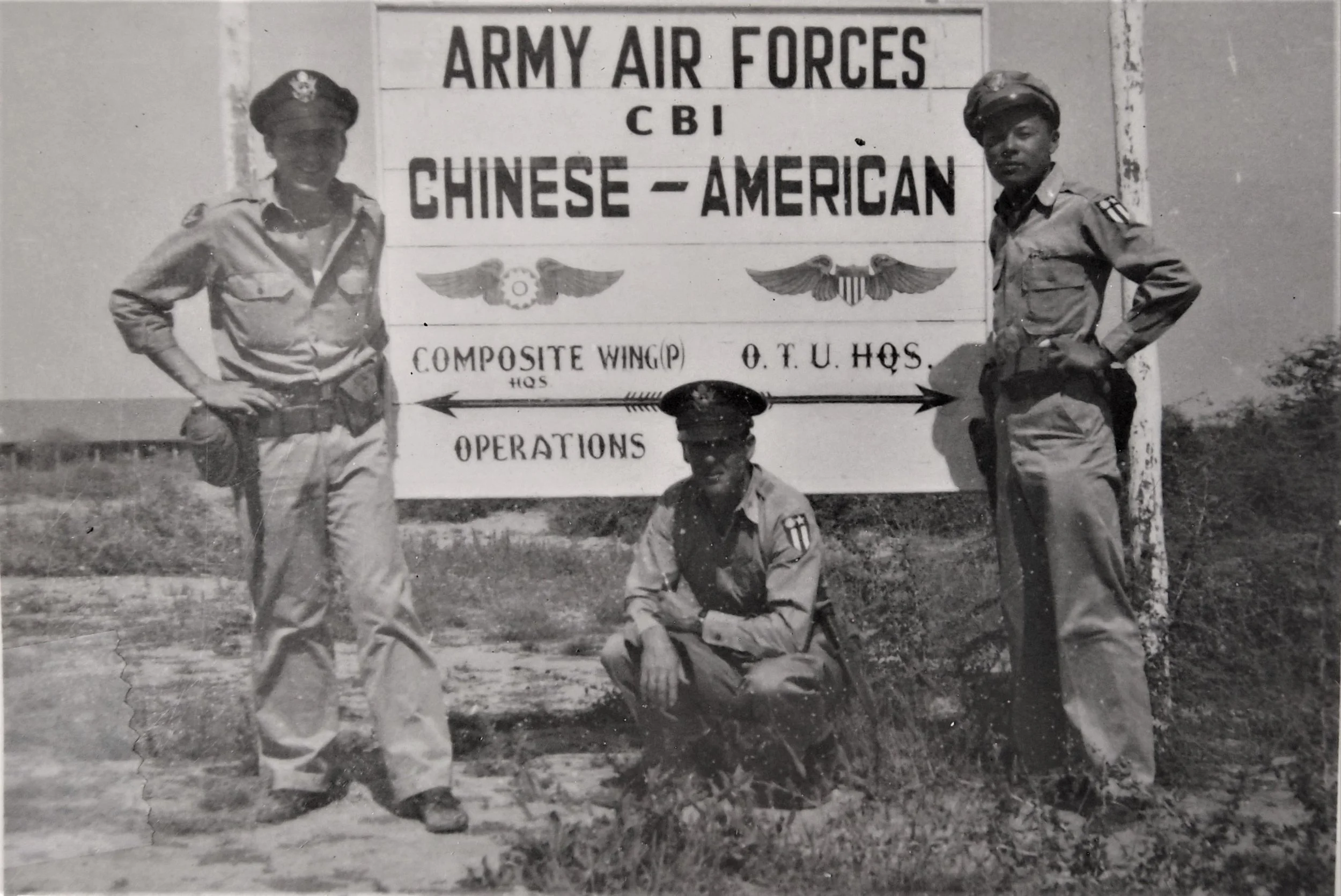“Flying Tigers New Emblem”
In early October of 1943, newspapers across the US announced that the 14th Air Force had officially adopted a new Flying Tigers emblem, with Maj. Gen. Claire L. Chennault's approval and endorsement. Former commander of the renowned American Volunteer Group that gained fame as the original “Flying Tigers,” as well as of the China Air Task Force that succeeded it, Chennault now served in command of the 14th Air Force. Its effectiveness soon earned it the moniker, "the Fighting Fourteenth.” Carrying on the Flying Tigers legacy under Chennault’s leadership, the 14th went on to win air superiority in China. In his memoirs, Chennault later praised the accomplishments of his air force and wrote, “It was a record of which every man who wore the Flying Tiger shoulder patch can be proud.”
“Chennault’s Baby” Wreaks Havoc
The month of September 1945 marked the final period of existence of the CACW. “Almost two years of operations were climaxed in August by the sudden ending of the war, thus bringing about the disbanding of the Chinese-American Composite Wing,” wrote the 1st Bomb Group’s acting historical officer. Conceived by Maj. Gen. Claire Lee Chennault, famed former commander of the American Volunteer Group (AVG), the CACW took Chennault’s plan to assist the Chinese even further than his previous efforts. Their mission to paralyze the infrastructure of the Japanese War Machine and to inhibit enemy troop movements by destroying cargo caravans, troop transports, railroads, tunnels, and bridges was unquestionably successful.
Leaflets Announce Japan’s Surrender
Following an aborted mission to bomb the infamous Yellow River Bridge just north of Chenghsien, a single Chinese-American Composite Wing B-25 flew on August 12, 1945, to the Nangyang-Yochow-Siangying delta area and dropped hundreds of thousands of “informational leaflets” printed in both the Chinese and Japanese languages. They announced the joyous news that “JAPAN HAS SURRENDERED! WAR IS COMPLETELY OVER!”
“Downed Baker Two Five”
May 16, 1945, began as many other days, but its events lived on in the memories of the 3rd Bomb Squadron members for many years. In the early morning hours, six B-25 crews were briefed at Liangshan on separate targets in the Ichang, Chingmen, and Shashih triangle in western Hubei Province for the purpose of hitting enemy troops and supplies on low-level bombing and strafing raids. Typical of the Chinese-American Composite Wing at this time, three aircrews were made up of all-Chinese members, and three crews were entirely Americans. Tragically, one of these bombers did not return. Aircraft #722 was hit by enemy fire over Japanese-held Ichang and crashed, burning as it went down. Five members of the crew died in the crash, and a sixth was injured as he bailed out. Captured by the enemy, he died soon afterward. The fate of these heroes was not discovered until after the war had ended.
Avengers Cross “the Hump”
The 2nd Bombardment Squadron (“Avengers") of the 1st Bombardment Group and the 28th and 32nd Fighter Squadrons of the 3rd Fighter Group received movement orders on October 17, 1943, and became the Wing's first increment to move to China. They flew their planes over “the Hump”—the name given by Allied pilots to the eastern end of the Himalayan Mountains—to provide air support for Chiang Kai-shek's ground forces in accordance with Chennault's plan. The 2nd Bomb Squadron’s six B-25s, under the command of Maj. Tom Foley, became the first CACW unit to reach China, arriving at Yangkai in South China on October 25, 1943.Hazardous conditions caused some of the 2nd Bomb Squadron's B-25s to delay crossing until conditions improved. Within a few days of the first attempt, the next contingent of three bombers led by group commander Lt. Col. Irving L. ("Twig") Branch followed, and finally the remaining three
Chennault’s Grand Experiment
Major General Claire Lee Chennault, in command of the 14th Air Force and formerly of the American Volunteer Group, envisioned and implemented his grand experiment--the Chinese-American Composite Wing. His purposes were to rehabilitate the Chinese Air Force fighting under Generalissimo Chiang Kai-shek, head of the Republic of China, and to provide good will and understanding between the Chinese and Americans for the future. The CACW proved to be enormously successful and played a key role in defeating the Japanese invaders.
Suicide Mission “Butcher”
As 14th Air Force planes, including bombers and fighters of the Chinese-American Composite Wing, prepared for a suicide mission, code name "Butcher," to attack the infamous Yellow Bridge in an attempt to destroy it "once and for all," a message from the tower announced, "Don't take off. The flight's been canceled." When the 3rd Bomb Squadron's B-25s turned around and taxied back in, someone ran out onto the runway shouting, "The Japs have surrendered!"







